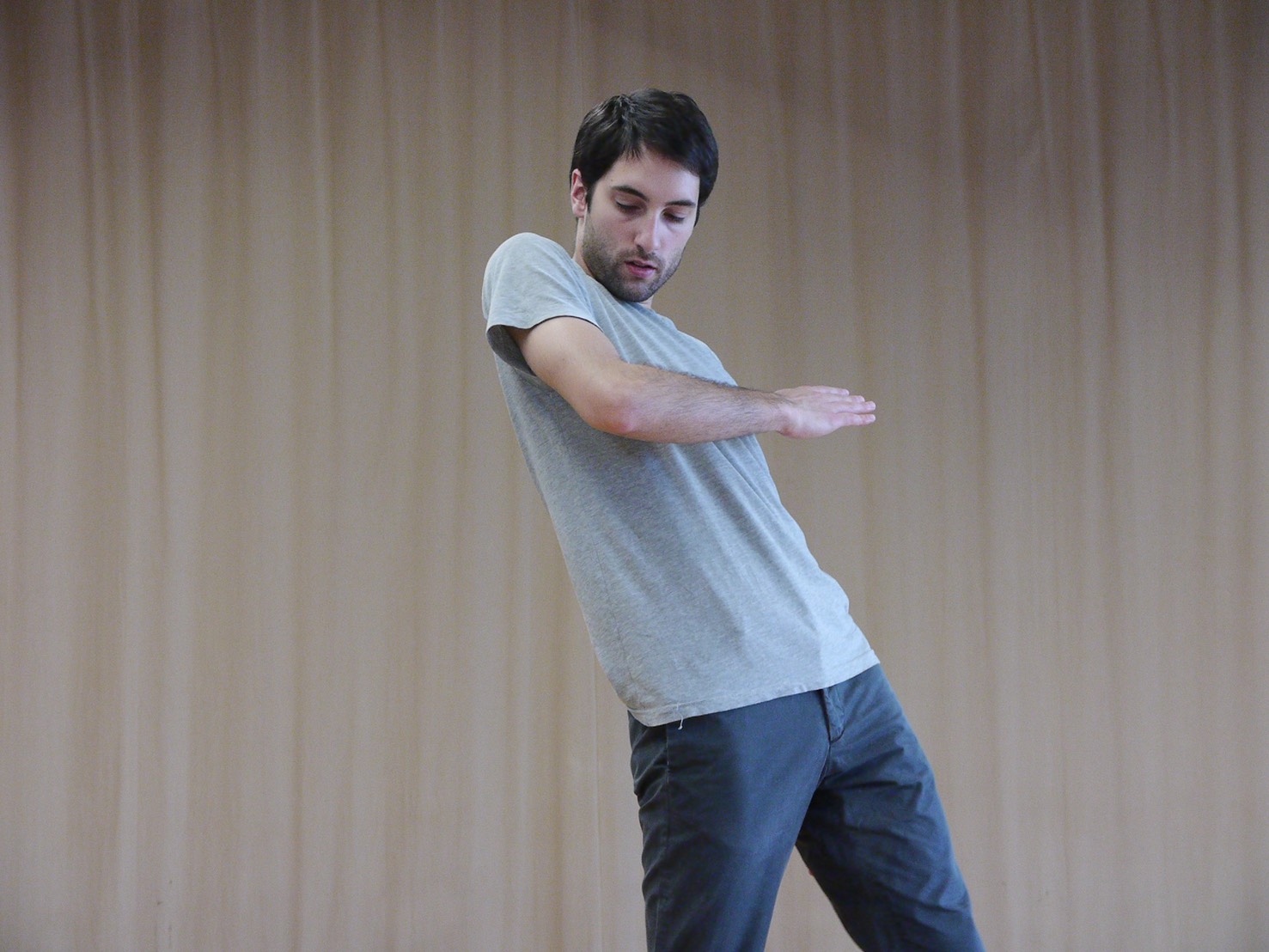Improvisation Techniques and Reflections – Observations of French Choreographer Noé Soulier’s Mouvement sur Mouvement

Dance minimalism: Removal of all elements except for the body
There were no special lighting effects. Rather, there was uniform lighting that was just bright enough to clearly see the choreographer’s movements. His clothing was clean and crisp, free of unnecessary ornamentation, close-fitting but not constricting. French choreographer Noé Soulier’s every choice was made with the purpose of returning to “movement” itself. This performance was not so much dance as it was lecture. It did not only include speaking but featured the intertwining of speech and dance. If these two had been separated, this performance/lecture would have ceased to exist. Within view of the audience (he did not stand on a stage, so that he was not on a different plane), he began to speak, demonstrate, and improvise possibilities for movement. He played the roles of movement historian and philosopher. At the same time, he was an inheritor and presenter of the individual experience.
Improvisation today: From society to individuals
What is improvisation? In this era in which the individual is valued, improvisation has gradually become a familiar term. It possesses the connotation of freedom, including concepts such as breaking free from frameworks and liberation. This complements the growing popularity of individualism, resulting in it being even more highly valued. However, this is countered by information and technology that are advancing at a pace beyond an individual’s ability to cope. Individualism is easily manipulated and swayed within the “world plaza”-like flood of information. Amidst this, the true self is constantly challenged and there is an intense tug-of-war between excessive self-affirmation and self-doubt.

The divide between improvisation and spontaneity: Noé Soulier’s precision and control
Stripping away as much external adornment as possible, Soulier was like an unarmed fighter. Rather than relying on weapons, he engaged directly with his body. As he narrated and demonstrated dance movements, the audience was completely focused on him. There was no impurity in his voice, and his movements were precise, without hesitation or gasping for air as he spoke and danced. There was no hesitation in his movements or pauses, as they were not completely spontaneous. Rather, they were the result of accumulation and reflection, as well as the repetitive interplay between them. With emotional expression, logical thinking, and physical control, a balance was achieved. Each of these played both leading and supportive roles. Only in this way could he fully express his ideas. Soulier extended his reflections on dance, having previously led dancers in exercises of introspection and reshaping of the self. Today, he entered the theater, using his reflections on movements to lead audiences in the reshaping of their relationships with society. As such, audience members served as both spectators and protagonists in all that Soulier’s body manifested.